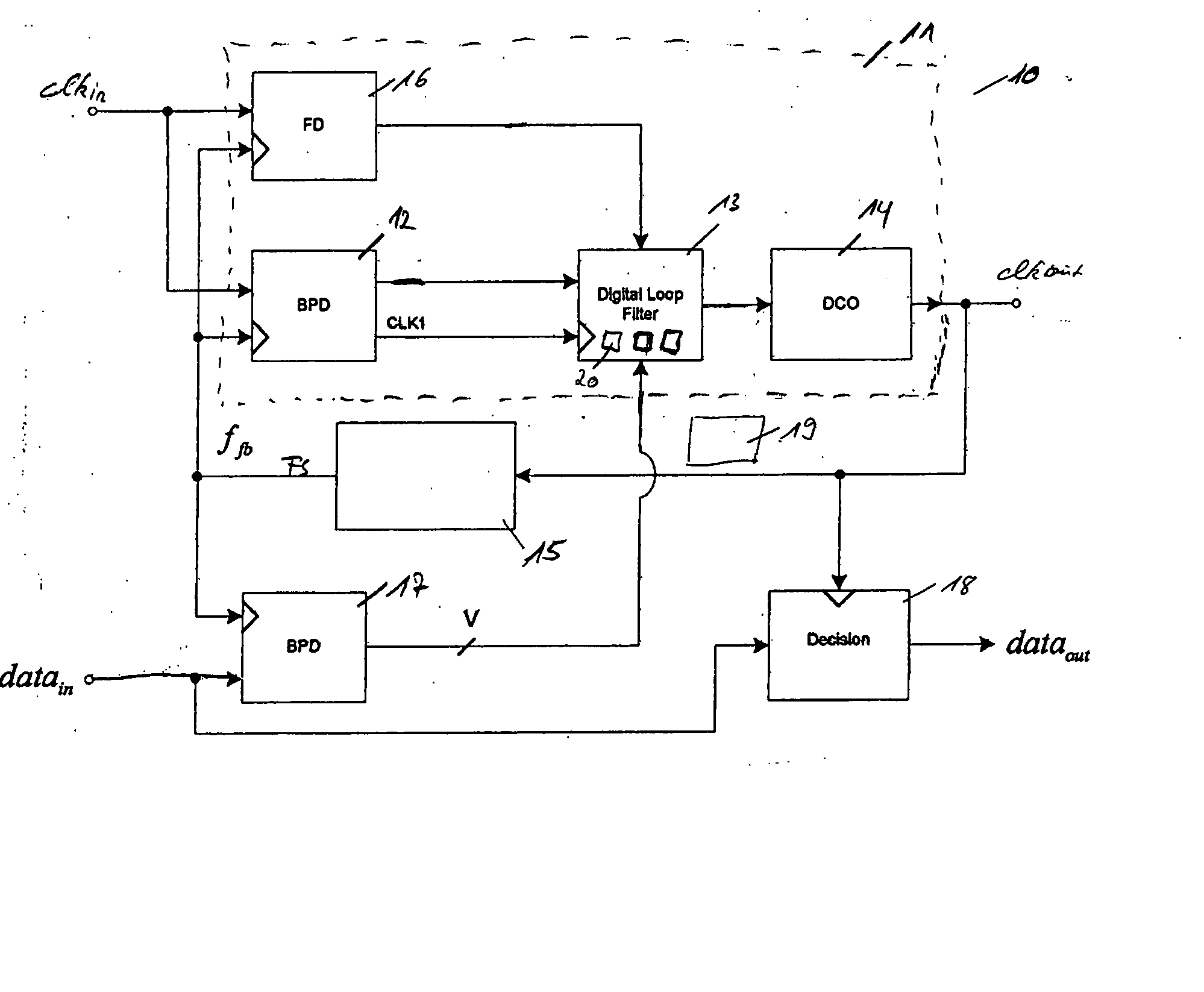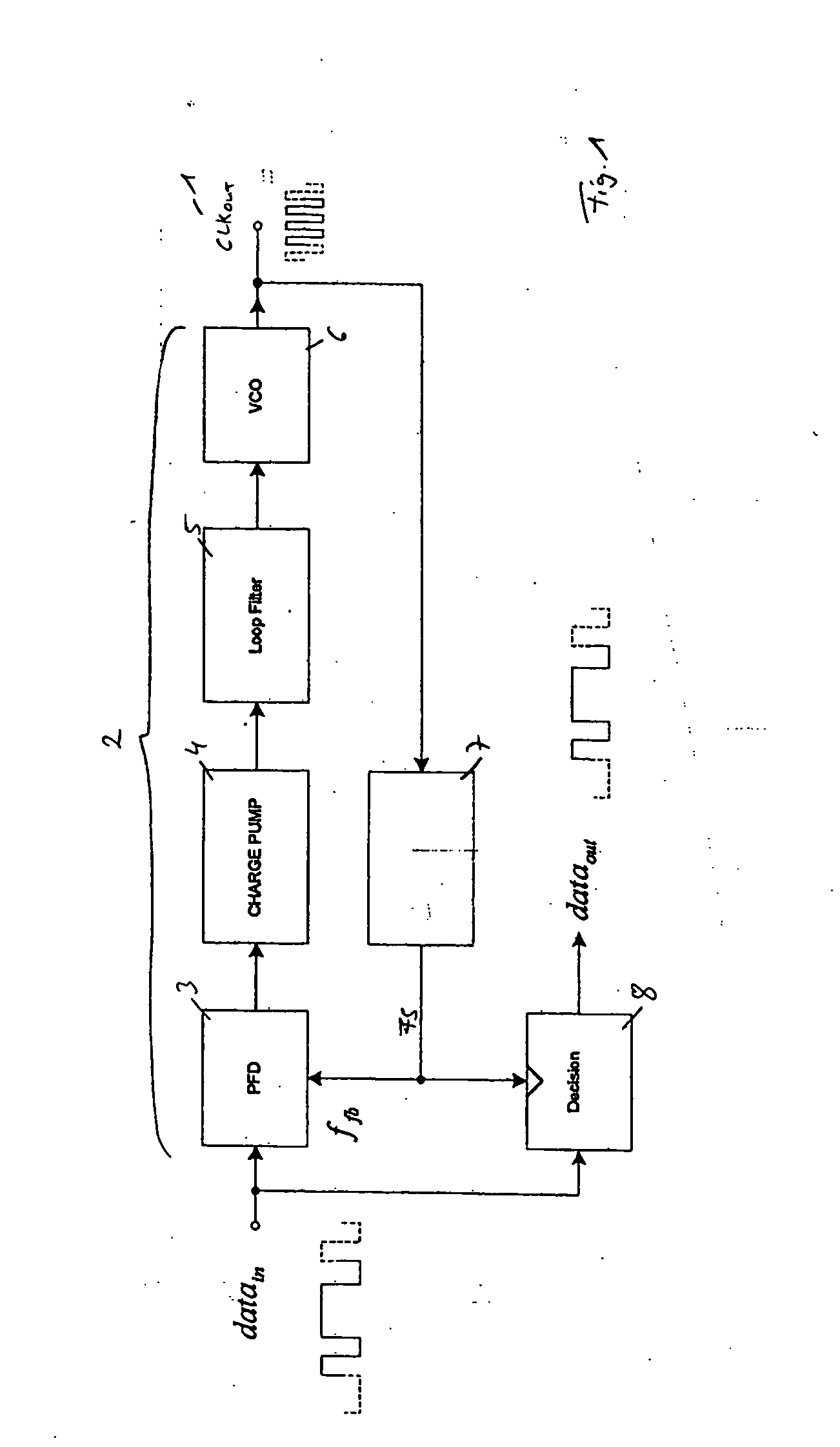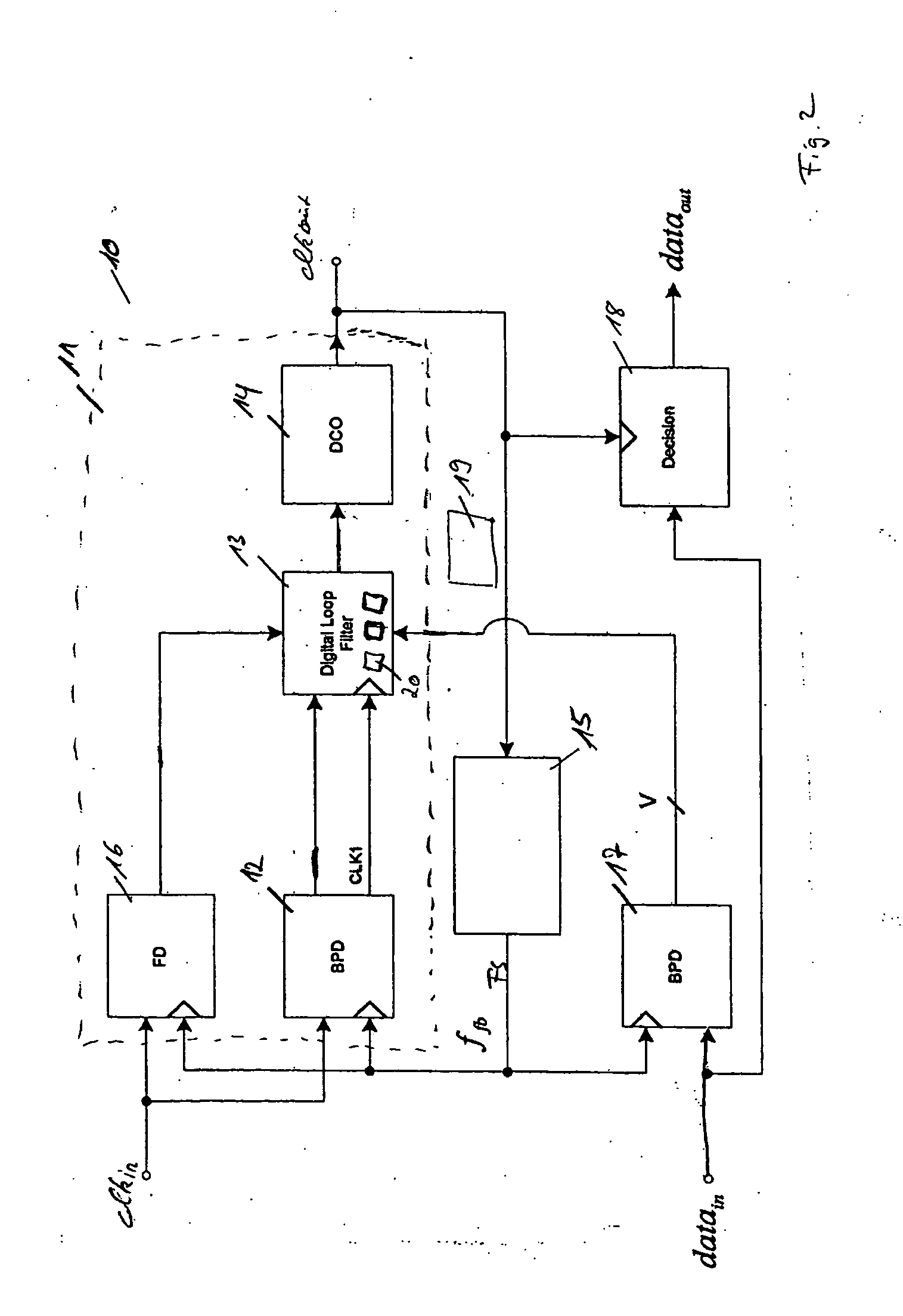Timing recovery phase locked loop
a phase locking loop and recovery phase technology, applied in the field of timing recovery phase locking loop, can solve the problems of loss of frequency locking condition of phase locking loop, leakage of voltage in the capacity, and high implementation cost of capacity, so as to reduce the frequency of phase locking loop control loops and reduce the frequency. the effect of frequency
- Summary
- Abstract
- Description
- Claims
- Application Information
AI Technical Summary
Benefits of technology
Problems solved by technology
Method used
Image
Examples
Embodiment Construction
[0029]FIG. 1 shows a block diagram of a timing recovery phase locked loop 1 having one data input for receiving an input data signal DATAin to synchronize the input data signal DATAin with a generated output clock signal CLKout. The incoming data stream is substantial because no reference clock signal is provided. Therefore, a control loop 2 of the phase locked loop 1 depends on the data density of the input data signal DATAin which means that level transitions of the input data signal DATAin have to occur regularly such that the phase locked loop 1 can maintain the frequency of the clock signal the input data signal DATAin is based on. Otherwise, such a phase locked loop may unlock if the input data signal DATAin comprises a series of data bits without the occurrence of level transitions. To avoid this in conventional systems a coding of the input data signal is required. Another possibility to prevent an unlocking lies in the implementing of a hold-over mode wherein the frequency ...
PUM
 Login to View More
Login to View More Abstract
Description
Claims
Application Information
 Login to View More
Login to View More - R&D
- Intellectual Property
- Life Sciences
- Materials
- Tech Scout
- Unparalleled Data Quality
- Higher Quality Content
- 60% Fewer Hallucinations
Browse by: Latest US Patents, China's latest patents, Technical Efficacy Thesaurus, Application Domain, Technology Topic, Popular Technical Reports.
© 2025 PatSnap. All rights reserved.Legal|Privacy policy|Modern Slavery Act Transparency Statement|Sitemap|About US| Contact US: help@patsnap.com



